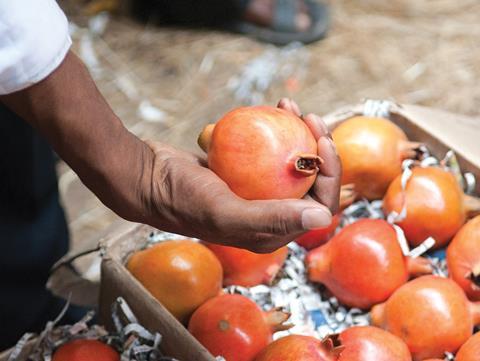Trade talks could see Indian exporters overcome regulatory hurdles

India is seeking improved access to the US for its fruit and vegetable exports, according to a report from Indian business publication Mint.
Amid ongoing discussion for a bilateral trade agreement (BTA) between the two coutnries, sources told Mint that India wanted amendments to the US sanitary and phytosanitary regulations that have caused fresh produce shipments from India to be rejected. Most recently, this happened to a shipment of 25 tonnes of Indian mangoes, which was rejected and destroyed in the US causing a loss of about US$500,000 to exporters.
According to the sources, India has sought greater market access for its mangoes, pomegranate, lychee, grapes, pineapple, guava, jackfruit, moringa, green chilli, carrots, bottle gourd and ridge gourd.
They told Mint, despite high demand, Indian fresh produce items continue to face regulatory hurdles stemming from pest-risk concerns and strict inspection protocols.
“Given their perishable nature, India has asked the US side to expedite the phytosanitary approval process and consider establishing certification and irradiation agencies within India to accelerate pre-clearance and shipment timelines,” one source said. “Indian negotiators argue that these measures would help reduce spoilage and make Indian horticultural produce more competitive in the US market.”
Currently, shipments of Indian mangoes and pomegranates to the US are limited to certain varieties and regions and are required to undergo irradiation supervised by the US. Lychees don’t currently have an agreed upon treatment for fruit fly and exports have therefore been extremely limited.
“The new BTA framework is expected to address these bottlenecks more systematically, allowing India to benefit from simplified compliance regimes for low-risk items,” said the second source.
Both countries have expressed optimism about the BTA with Indian negotiators hoping for reciprocity from the US following India’s recent acceptance of US products including Washington apples and Californian almonds, the source said.
Ekram Husain, chief executive of Essar Exports and vice president of the VAFA Fresh Vegetable and Fruits Exporters Association added that he expected the talks would move in the right direction.
“The US is a high-value market for Indian produce, especially fruits like mangoes, grapes, and pomegranates, as well as vegetables,” he told Mint. “With the right tariff concessions and alignment of quality standards under the trade agreement, we are confident this will significantly boost our exports to the US. We’re banking on this agreement to open new channels and make Indian produce more competitive globally.”
Another exporter, Nadeem Siddiqui, who owns Amroha-based Shahnaz Export, also told the publication he was hopeful the ongoing trade talks with the US would reach a positive outcome.
“We have the required infrastructure for exports,” Siddiqui said. “I believe that India’s push for horticulture produce in the talks will open up new avenues for Indian exporters.”
Others maintain some reservations noting even minor documentation errors can lead to significant losses.
Dibyanshu Tripathi, co-founder and chief executive of Hexalog told Mint that India’s cold storage infrastructure still covers only 10 per cent of its horticultural output, leading to post-harvest losses between 6 per cent and 18 per cent.
“Fuel accounts for 45 per cent of cold chain operating costs – much higher than in Western countries – and limited air cargo from key production regions further delays the export of perishables,” he said.
According to Tripathi, exporters are also under pressure from unpredictable trade policies, including the loss of GSP (Generalized System of Preferences) benefits and increasingly stringent US import standards.
“However, initiatives such as the Agricultural & Processed Food Products Export Development Authority EU-compliant packhouses, cold-chain expansion by the National Centre for Cold Chain Development, and ongoing trade talks with the US show that India is moving in the right direction to tap into the global fresh produce market,” Tripathi added.



